
|
 |

|
 |
Kuchipudi Bhagavathamelam: A rich cultural heritage - Tadepalli Satyanarayana e-mail: kuchipudi.bhagavathamelam@gmail.com September 8, 2014 At the mention of the word Kuchipudi one's thoughts go to either the classical dance form Kuchipudi, or to that of the Kuchipudi village in Movva Taluk, Krishna District, Andhra Pradesh which is perhaps the only place in India, which has given its name to a classical dance form. 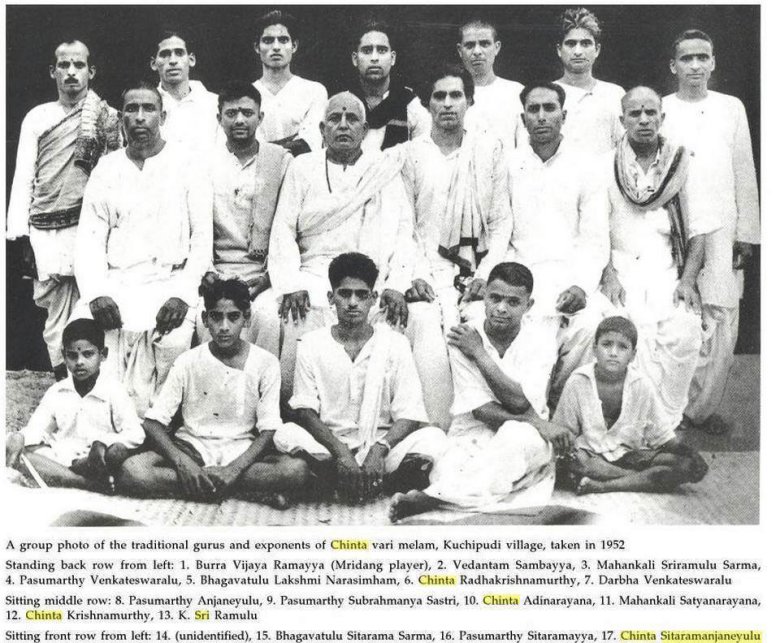 There continue to be more information through various media avenues showcasing Kuchipudi, the modern day or contemporary version, so to say, around the world by various artists, exponents, gurus, institutes, universities, etc. But when it comes to making available the various aspects with regard to the evolution, transformation, propagation, protection, preservation of the art form which has a documented history running over to centuries before us, there is a huge dearth and void which needs to be filled up to appreciate, imbibe, practice and propagate the nuances of the art form in totality. There is a huge information gap when it comes to facts about the people / community, their struggles, sacrifices, dedication, joy, journey from mere mortals to that of legends with the divine intervention / guidance, destiny and above all their commitment and steadfastness in undergoing all that was required to make this art form made available for us today. It is in this regard, there is indeed a dire necessity to know and put in proper perspective the role and contribution of the torch bearers of the art form for centuries now, the Bhagavathamelam of Kuchipudi and their rich heritage. It is indeed a fortune, that their continuous efforts, role in painstakingly ensuring the perpetuity of the art form not only makes interesting reading but also a subject for research providing lessons all through the journey to make one a better human being foremost and an artist of high caliber. Even an iota of the qualities displayed by the pillars and the stalwarts of the Kuchipudi Bhagavathamelam could be internalized by the discerning student of the art form. Having said that, one can easily decipher that an article would not suffice to cover all their stories or share all that they stood and continue to stand for, but the purport of this article is to provide a glimpse of the Bhagavathamelam tradition and provide impetus for one to undertake a more serious personal journey for further fulfillment in their pursuit in the realm of their art form - Kuchipudi. Kuchipudi Bhagavathamelam tradition 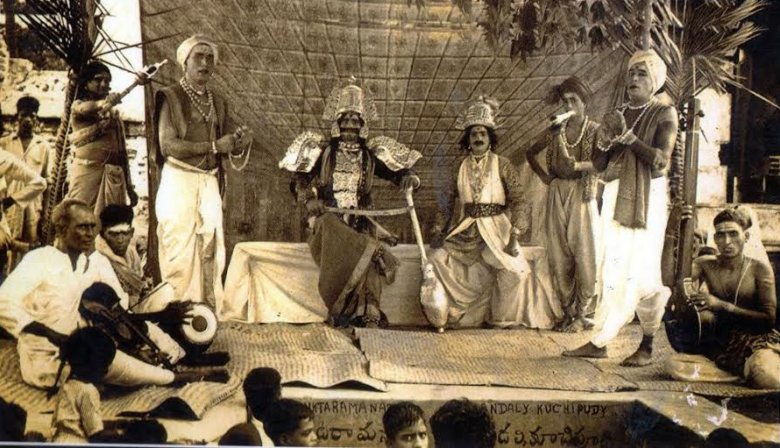 The deeds of Siddhendra Yogi is all too familiar to repeat but it would augur well to know that until this day the Kuchipudi Bhagavathamelam uphold their promise to him, that at least one son of the traditional families of Kuchipudi village will pursue dance. As requested by him, at least once in their life time they will don the female personification role in 'his' famous creation, 'Bhama Kalapam' which he taught to the Kuchipudi traditional families. This speaks volumes of their commitment to the art form and their character. The traditional families of Kuchipudi art who form the Kuchipudi Bhagavathamelam comprises namely the Bhagavatula, Bokka, Challa, Chinta, Chitalapati, Darba, Hari, Josyula, Mahankali, Pasumarti, Pillala Marri, Somayajulu, Taddepalli, Vedantam, Vempati and Yelleswarupu. They have been and continue to be the torch bearers of the art form ensuring the nativity of the dance traditions of Kuchipudi comprising of Samskrutha roopakams, Kalapams, Yakshaganams, Kelikas; solos are not compromised and the same is preserved for posterity. 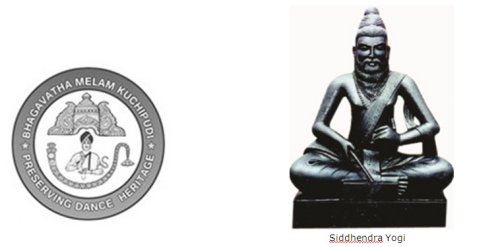 Having learnt the nuances of the art form thoroughly, performances are a very natural corollary and here too they have been following the Santana Dharma of being a conduit to educate the masses through the medium of dance. Dance is used as a medium to enlighten and uplift the society with their performances based on mythological stories, epics, puranas apart from addressing social issues which can be seen from their usage of Natya dharmi and Loka dharmi to cater to the needs of all strata of society who witnessed their performances. The famous Bhama Kalapam goes to prove the effects of surrendering to the Lord foregoing one's ego and makes one to contemplate about paramathma and jivathama while Golla Kalapam written by Bhagavathula Ramayya shows how there is no caste or creed when it comes to birth of humans and explains lucidly in entirety the aspects related to creation. Dance serves as a medium to provide educative lessons to the audience through entertaining means of conveying the messages of the various epics and puranic stories as could be seen from the list of Yakshaganams enacted by the Kuchipudi Bhagavathamelam, namely Gaya Natakam, Harishchandreeyam, Ksheerasagara Martanam, Markandeya Charitra, Mohini Basmasura, Mohini Rukmangada, Prahlada Natakam, Rama Natakam, Sasirekha Parinayam, Sri Krishna, Usha Parinayam, Vipranarayana, Virata Vijayam, etc. The dramas of the Kuchipudi Bhagavathamelam are mesmerizing and they are so effortlessly adept in bringing out the nava rasas through their vachika abinaya, a uniqueness to the Kuchipudi art form. Each artist learns in toto, all the characters of the plays and they perform the ones to which they are more suited. Special attention is provided right from the attire donned for the role, maintaining the Telugu traditions carefully in all the costumes, ornaments and props for a more authentic presentation of the epics and puranas. In the not so distant past, when there were not much publicity avenues for the dance shows other than through word of mouth, in the mornings or days before the play, the artist who had better diction capabilities were selected and trained to do a smaller capsule of some aspects of the play of the evening more like the modern day trailer which they also called as Pagateveshalu imbibing the local dialects to connect and create added interest and involvement from the local populace. The innate assets of the artists were identified carefully with no prejudice providing opportunities based on the requirement of the event at hand, with a view to reach out and appeal to all strata of the population as reflected in various literary works of different periods and places. When it comes to teaching the art form, the Kuchipudi Bhagavathamelam welcome all and probably even show a fine humane sense of responsibility of sharing the art form with all and sundry that show even a semblance of interest. They are never the ones to be swayed by social stigma based on caste, creed, etc and in the past they even went ahead and taught the art form to the Devadasis. The elderly distaff side of the traditional family would take care of the needs of the students who stayed with the guru in the Gurukula system and even till today their hospitality is very well known when it comes to taking care of the ladies, children, artists from various parts of the country who visit the village for dance purposes. 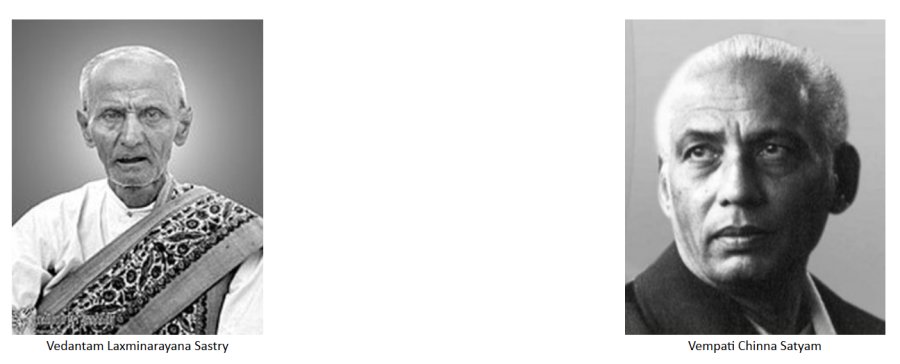 Solos has its attractions and advantages like an artist need not necessarily know all aspects of dance and could be on stage with the knowledge of angika abinaya only, with the remaining aspects like nattuvangam, music, etc being taken care of by a different team. Moreover, generally the credit is primarily taken by the solo artist performing on stage and grows in importance and stature more as an individual dancer, quite a contrast to what was witnessed in the heydays of the Kuchipudi Bhagavathamelam wherein it was always very much a group effort by the various melams (troupes) namely the Chinta vari melam, Vedantam vari melam, Mahankali melam etc. It was the synergic growth of the group as a dance team / society which was the focus and not individual growth though there were then too, a handful of stars who took the centre stage but it was always ensured that the remaining entourage also got their due share and prominence. It is said that the atmosphere was so very congenial that the various melams used to come together after each outing to perform for setting right their ornaments, costumes, props, stage craft items, while exchanging their experience during their dance yatras and also liberally sharing what they learned from other art forms, etc. among the members of different melams. It was a collective enriching experience for one and all in the melams. This does not mean that one castigates the solos and the system that it has fostered in the past few decades. It too has lot of advantages when it comes to performance duration, different skill sets, less dependency on accompanying teams, reaching out / capturing the mood of the audience in a very short duration, propensity to learn / teach with even lesser efforts and as a part time activity, etc. But to say that solos are all that Kuchipudi stands for is profane and almost akin to blasphemy, sadly misleading the present generation. While it came to publicizing the art form one cannot forget the role of the Kuchipudi Bhagavathamelam who took by storm the celluloid world too. The nuances of the art form like importance of entry / exits, enacting negative characters, dance direction in totality as a concept introduced by the likes of Vedantam Raghavaiah, Vempati Peda Satyam, Pasumarthi Krishnamurthy and later Vempati Chinna Satyam enabled the spread of the art form beyond the Telugu populace. This readily captured the imagination of the contemporary artists through the medium of films too and helped in propagating the art form. 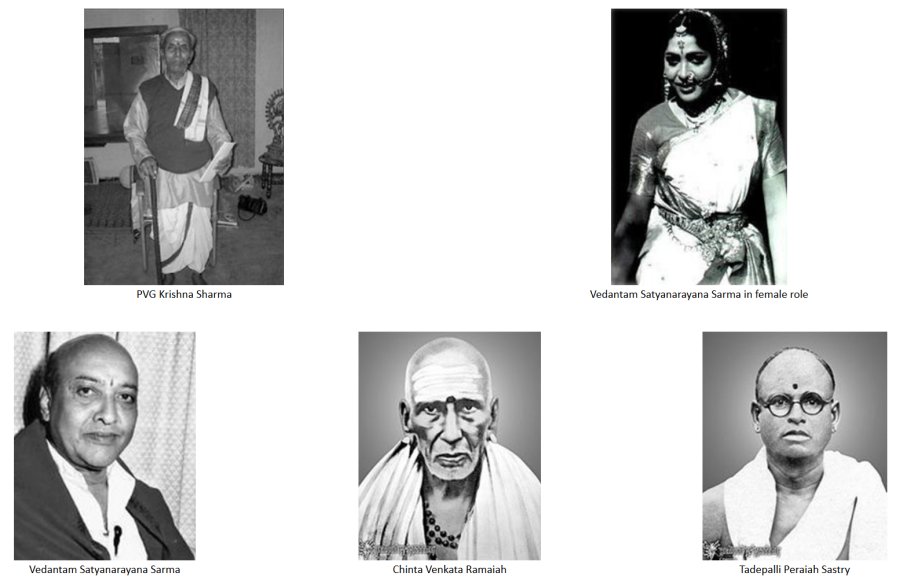 Dance is a very integral part of the Bhagavathamelam's life with it occupying a primary seat of activity in every aspect of the day to day activity, puja, festivals, family and community get together; the village temple activities start and end with dance. Vedantam Satyanarayana Sarma, the 'Kaliyuga Satyabhama,' one of the most revered Kuchipudi artistes for essaying the female personification roles to perfection said that during his days when one visited the streets of the Kuchipudi village, one could hear music, see dance performances, dance practice sessions, training, etc in each and every house all through the streets of the village agrahara with the entire village soaked in one or other aspect of the art form. The village temple takes the centre stage and even today all the festivals start with the song 'Amba Parakku' based on the main deity Bala Tirupurasundari. That the song forms part of all the performances of the Kuchipudi Bhagavathamelam and also as an initial offering in all the household functions / activities, shows the importance of the village deity in all their activities and their offering obeisance through dance / music. Even now during the village deity's Kalyana Utsavam, all the families are represented and they can be seen dancing and singing all around the temple for 16 times performing in particular, what they are specialized in and well known. The Yelleswarupus are generally good at music; similarly the Vedantams are well appreciated for their graceful female personification skills and Chintas for their direction - Sutradhari tatvam, while Mahankalis are acknowledged for their good enactment of the negative roles in the Kuchipudi Yakshaganams. This goes to show they offer to the deity in return the same that they received by the grace of the deity as a mark of gratitude. Their penchant for traditions could be seen from the fact that whenever they tied the ankle bells it was always with a sense of prayer and worship invoking the presence of the deity that they worship. In fact, it is said whatever the Kuchpudi Bhagavathamelam did there is a tinge of dance / music attached to it. For instance during the Ammavaru Kalyana Utsav (the village deity) the Kuchipudi Bhagavathamelam's announcement of the same 'Jayaganta' sounds musical with all the five talas as observed and remarked by the Jnanapith awardee Viswanatha Satyanarayana. The traditional families participated together during all the occasions and generally they continue to get married among the traditional families and Kuchipudi Bhagavathamelam are more of an extended family. The Kuchipudi Bhagavathamelam was far ahead of their times when it came to fulfilling their social responsibility. They took initiatives in the lines of the contemporary Corporate Social Responsibility activities and ploughed back a portion of their earnings for the development of the village, cleaning of the village water tank / bund, ponds, various Panchayat development programs, etc. They were also very much self sufficient without dependence on the patronage / charity of the Kings / royalty and lived within the means of their earnings. They did have their share of rewards from royalty, very notable among them being the episode involving the Nawab of Golconda. Abdul Hasan Tahnishah had a visit to Masulipatanam (which is now known as Machilipatnam) and a Kuchipudi dance performance was arranged for the king. Being delighted and pleased by the performance, the king presented a piece of land of a staggering 600 acres approximately to the traditional families involved in the performance and gave them the title of the land written on a copper plate. Likewise, it is said that King Krishnadevaraya, pleased with their enactment of Bhama Kalapam, gifted them a Golden Jada. Tradition has it that the Bhagavathamelam were never for treating the art form as a business proposition and they strongly believe that their destiny is in dance for the sake of dance. They are very liberal when it comes to showing their gratitude to their elders, ancestors who had passed on the rich traditions to them. The Kuchipudi Bhagavathamelam not just teach dance but also live by example the life of a simple householder and teach the students as to how to live properly with ethical values in their efforts to groom and mentor the student as a total personality. It comes more naturally and not out of choice or design. For Kuchipudi Bhagavathamelam, it was never all about earning and entertainment while it was more on enlightenment and upliftment of the society. Even after the boundaries shrunk post Independence, stalwarts like Chinta Krishnamurthy, Vedantam Satyanarayana Sarma, Vempati Chinna Satyam wanted to keep the traditions strongly entrenched and alive and continued to show the true caliber of the Bhagavathamelam. The lessons have not been lost on the present generation of the Bhagavathamelam and the likes of Pasumarthi Ramalinga Sastry, Pasumarthi Rattaiah Sarma, Pasumarti Kesava Prasad, Vedantam Radheshyam, Vedantam Ramalinga Sastry and the younger generation represented by Vedantam Raghavaiah, Vedantam Venkata Naga Chalapathi, DSV Sastry, Vempati Ravi Shankar, Chinta Ravi Balakrishna, Yelleswarupu Srinivasulu, Vedantam Satya Narasimha Sastry among others are the torch bearers of a community which has given so much to the art world in particular and humanity in general. The spread of the art form beyond the Kuchipudi Bhagavathamelam, ensured by all the efforts taken by the village, the inhabitants of the past few centuries who had steadfastly protected and preserved the art from so much natural, cultural, socio, economic, political invasions and upheavals, needs to be acknowledged and given their due share. Perhaps the beneficiaries of the art form Kuchipudi would take a cue and willingly participate in the endeavour to make the village and the heritage of Kuchipudi Bhagavathamelam being showcased to the world in the way it deserves to be. Tadepalli Satyanarayana hailing from the traditional families of Kuchipudi village, is a Kuchipudi Bhagavathamelam artist and a research scholar. Post your comments Please provide your name and email id when you use the Anonymous profile in the blog to post a comment. All appropriate comments posted with name & email id in the blog will also be featured in the site. |